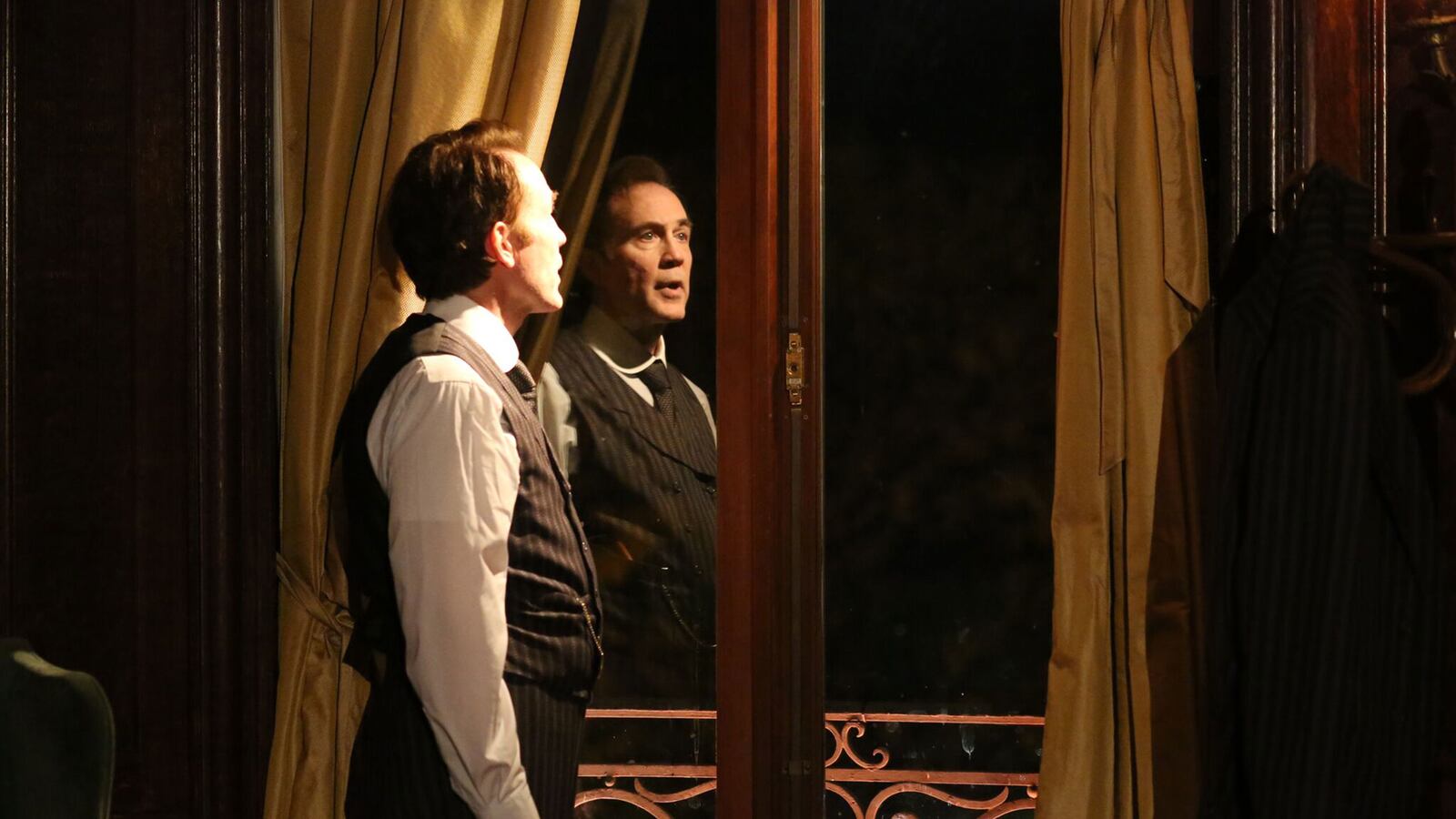With holidays getting underway, the very best party of the season is taking place at an elegant mansion on Upper Fifth Avenue in New York.
As you walk in, a lovely maid in long skirts named Lily greets you by name and leads you up the stairs, where it’s 1904. An elegantly costumed woman is playing the piano, well-dressed guests are dancing, and waiters are offering sherry, whiskey, and stout.
Welcome to The Dead, 1904. The latest addition in the new trend of immersive theater, this adaptation of the James Joyce short story, which takes place at the American Irish Historical Society, is brilliantly poetic, gorgeously acted—and includes dinner.
With no stage, the audience members literally brush against the actors during the evening. Tony Award-winning actor Boyd Gaines, who plays the main character Gabriel Conroy, admits the proximity is an unusual experience for him.
“There’s nothing that hasn’t surprised me!” Gaines said after one of the early preview performances. “Audiences can be challenging acting partners because you can’t rely on any given response—so you have to be resilient and go with whatever they give you. We’re thrown curves every night.”
Director Ciaran O’Reilly told the cast to think of the audience as extras in the play. Since Joyce’s story takes place in a single evening at a dinner party, the set-up isn’t just a gimmick—it makes dramatic sense.
“The audience members are the guests at the party who don’t have any lines,” O’Reilly said with a laugh.
The party starts in the living room where the audience mills around sipping drinks as the actors talk and sing and play violin and piano. When it’s time for dinner, the audience follows the cast into the dining room, sitting at long tables with gorgeous period plates and crystal. (It gives a whole new meaning to dinner theater.)
The meal Joyce describes in the story—beef and ham and goose (or the turkey equivalent) and potatoes—is served to everyone along wine and ale. (If you know the story, you’ll also be pleased by the almonds and figs and raisins on the tables.) The catering is good enough that you’ll disagree when one of the elderly hosts loudly complains that the dessert pudding “isn’t brown enough.” It’s actually delicious.
But the real power of the evening comes when everyone is back in the main room. One of the guests, Bartell D’Arcy (played by Irish Tenor Karl Scully) sings a lovely aria. Gabriel’s wife Gretta (the superb Kate Burton) stands on the stairs at the other side of the room, listening and awash in emotion. Her face reveals love and longing, sadness and surprise, anguish and loss.
Shortly afterwards, the main guests all leave, and the audience is left in the living room. Gabriel and Gretta go upstairs to their bedroom. Before we can wonder what role is left for us, Lily appears on the stairs and with a sly nod, invites the audience to follow her upstairs.
Now instead of guests at the party, we in the audience are silent ghosts at the edge of their bedroom, where the truth about their marriage devastatingly unfurls.
Gaines and Burton bring an extraordinary subtly to the final scene, a quiet power that comes naturally to these veteran stars. You never feel like you’re watching a performance—rather you’re an invisible presence in another couple’s bedroom, overhearing what people never admit or say in public. You can feel the soulful sadness and loss at their core.
The concept for The Dead, 1904 originated with novelist Jean Hanff Korelitz who imagined the immersive performance and joined with her sister Nina Korelitz Matza to produce it. Korelitz began by adapting Joyce’s story into a play—and then handed the script over to her husband, Pulitzer Prize-winning poet Paul Muldoon.
“Paul says we were collaborators, but I did the first pass, preserving as much Joyce as I could, and then he injected all the genius,” said Korelitz.
A chaired professor of humanities at Princeton and the poetry editor of The New Yorker, Muldoon is also an expert in Joyce. He calls Joyce “the most complete writer—he has everything covered and every word resonates.” But Muldoon also wanted to make sure that nobody needed to study ahead of time to get swept up in evening. So he reminded himself that the core of the story is completely accessible for a modern audience.
“The elevator pitch is that it’s the story of a man who discovers he knows next to nothing about the woman he’s been living with,” said Muldoon. “That’s something many of us recognize—the essential mystery of the other human being in one’s life.”
Muldoon found “the surface of the story beautifully clear and concise,” but he added new material to clarify and expand certain ideas. He even tossed in references to an 1876 pulp novel by Bret Harte about people starving to death in the Sierras. The book is called Gabriel Conroy and Joyce clearly used some of the language in his story—possibly to make a connection to the Irish famines.
Muldoon didn’t have many misgivings about changing this famous story.
“In some sense it takes nerve to adapt James Joyce. But it takes nerve to get out bed in the morning, too, doesn’t it?” he said.
This is not the first time Joyce’s story has come off the page. Angelica Huston starred in the 1987 movie adaptation directed by her father, the great John Huston. (It was his last movie.) A musical version had a short run on Broadway back in 2000 and got five Tony nominations.
Many people, including Muldoon, consider The Dead (the last story in Joyce’s Dubliners) to be the greatest of Joyce’s works. Its overwhelming power comes in the lyrical, soul-wrenching ending. Korelitz and Muldoon’s adaptation makes it even more lyrical and Boyd Gaines’s poignancy in speaking the words is almost overwhelming.
The night I saw the show, everyone in the audience was wiping their eyes as Gabriel moved slowly around the bedroom and laid bare the deepest emotions at the heart of a marriage.
You could almost feel the ghost of James Joyce hovering. And even he was impressed.
The Dead, 1904 is at the American Irish Historical Society, 991 Fifth Avenue, NYC, through Jan. 7, 2017. Book tickets here.






